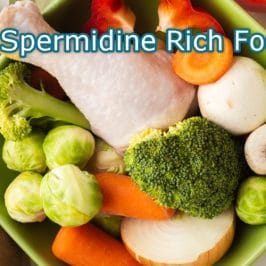Eating certain foods requires a lot of calories. And many popular diets are based on this principle, the purpose of which is to maintain or reduce body weight.
In fact, maintaining weight is just a matter of energy balance.
Energy balance is achieved when the number of calories consumed is equal to the number of calories burned. Consumption of less (than necessary) amount of energy leads to weight loss, and consumption of more – to gain.
Three factors affect the rate of energy expenditure in the body:
- The thermal effect of food is one of the components of metabolism. This is the process of burning calories to digest all the food you eat;
- The level of basal metabolism is the number of calories an organism needs to maintain vital activity at rest;
- Physical activity – the number of calories spent in the process of daily activity and sports.
By managing these factors, you can significantly increase the effectiveness of weight loss without setting yourself hard limits and achieve long-term sustainable results.
Thermic Effect of Food (TEF)
The thermic effect of food (TEF) is the energy that is needed to digest, transport, and assimilate food. Different amounts of energy are spent on the assimilation of various products, in aggregate up to 10% of the total daily energy costs of the body.
The thermic effect of fats is about 0-5%. In terms of assimilation, fats are the most affordable form of energy.
Carbohydrates are more difficult to digest; their TEF is about 5-15%.
The most difficult to metabolize are proteins. The thermic effect of proteins is close to 20 -30%.
By choosing the right food and following simple rules, you can increase the percentage of energy that is spent on the digestion process. So, without changing anything in the calorie content of your diet, you will achieve significant results in losing weight.
Thus, you can calculate how many calories the body will spend on digesting the food you eat.
The following have a high thermal effect: cabbage, radish, greens, carrots, meat, fish, eggs, whole grains, cereals, and dark rice.
The lowest thermal effect is observed in sugar, fats, and alcohol. Such products are very quickly absorbed by our body, practically without raising the level of metabolism. In general, they do not bring anything good to the body.
In order to lose weight, it would be ideal to combine foods that have a high thermal effect and a low glycemic index. This condition would only be beneficial. By choosing your diet in this way, you will be able to control your blood sugar levels, as well as feel full for a longer time, since these foods take longer to digest.
You have probably heard of negative calorie foods. Frankly, this is just a paraphrase of the thermal effect. Some foods are very thermal and take a lot of energy to digest, and end up getting very few calories from them. Usually, these are plant products, some fruits, and various spices. There is no absolute negative calorie value. Each product has its own energy value.
If you are constantly trying to cut calories in your diet as much as possible, then you should not do this. The food will not give you all the calories that you have calculated. Some calories will be used for digestion. So that your diet does not fail, consider these facts, and you will succeed.
Regular Meals
It is empirically proven that metabolism depending on the frequency of food intake has an effect. And, as a result, it affects a person’s weight and other indicators of his physical health.
Studies have shown that eating irregularly can lead to being overweight. Scientists compared the efficiency of food absorption in people with irregular meals (study participants ate 3 to 9 times a day at different times) and with stable eating habits (5-6 meals a day at a stable time). The thermic effect of food, regardless of its composition, was higher in people with regular meals. This means that the body of people with regular meals spends more energy on digesting food; therefore, metabolism is accelerated.
Spicy food
Spicy food really speeds up the metabolism. Spices that increase TEF include chili pepper, horseradish, mustard, cinnamon, fennel, garlic, ginger, ginseng, guarana, and turmeric.
Hot peppers and very spicy foods can cause a 20% increase in metabolism for 30 minutes. In a study in 2003, Thai women were offered to drink sugar water after drinking 5 g of fresh chili pepper. The insulin release and glucose metabolism rate were measured. In the control measure, women drank sugar water without first consuming pepper. As a result of research, a clear relationship was found between the use of chili peppers and an increase in the level of metabolism that occurred within a few minutes after the entry of chili peppers into the body.
Protein
Recently, a lot of attention has been paid to protein, both due to its nutritional characteristics and its high thermal effect and ability to burn fats.
It is now an established fact that the thermal effect of protein is significantly higher than that of fat and carbohydrates. As mentioned earlier, the thermal effect of proteins is close to 30%. This means that almost 30% of the calories consumed with protein are spent by the body on the processing of the eaten protein, and only 70% is absorbed.
Perhaps this feature is associated with the absence in the body of special storage for protein. The greater amount of energy needed to metabolize the protein does not affect weight in the short term, but it becomes significant clinically and statistically for a period of several months or years. The practice also shows that high-protein diets give a greater sense of fullness compared to low-protein diets.
Danish scientists conducted a study in which they measured daily energy expenditure (basal metabolic rate) in young, healthy, overweight, and 1–2-degree obese men who consumed pork, soy protein, and carbohydrates. The results of the study showed that replacing 17-18% of carbohydrates with proteins (animals or soy) increases daily energy consumption by 3%, and replacing soy protein with the animal – by another 2%.
Studies by Greek scientists have shown that a high-protein diet leads to an increase in the metabolic rate during the week in both thin and overweight women. The same program participants on a diet with a normal amount of protein, but high in fat, showed a decrease in metabolic rate, despite the same fragmentation of nutrition and calorie content.
The Thermogenic Effect of Water
Drink plenty of water! Probably each of us has heard this many times. But not everyone knows there is a scientifically proven link between an increase in water intake and an increase in metabolic rate.
Studies conducted in Germany show that immediately after the consumption of approximately 500 ml of water, the metabolic rate increased in the study participants. In healthy men and women, almost 30%, and remained so for 30-40 minutes. Based on this, scientists have suggested that consuming 1.5 liters of clean water per day allows you to burn 17,500 kcal per year, which is 2.5 kg of weight.
About 40% of calorie consumption is associated with the need to heat drunk water in the body to body temperature. The remaining 60% is most likely spent on restoring the osmotic balance. Scientists noticed that with the consumption of salty and highly mineralized fluids, the increase in metabolic rate was significantly lower.
Green Tea
Green tea is a powerful stimulant of metabolism due to its caffeine and catechins. According to recent data, the thermogenic effect of green tea cannot be fully explained by the caffeine contained in it, since it is higher than the effect when taking a similar amount of pure caffeine.
Green tea stimulates the process of weight loss by accelerating the breakdown of fats by the liver (thermogenic effect), suppressing lipase (an enzyme that catalyzes the absorption of fats in the digestive tract), and also suppressing hunger. Recent studies have shown that green tea helps to reduce weight for overweight people by increasing the metabolic rate and the rate of fat oxidation.
Conclusion: Foods With a High Thermic Effect
The thermal effect is a measure of the amount of energy required to digest a particular food. It has an effect on metabolism and energy consumption increases when eating.
There is a certain number of thermogenic foods that increase body temperature and enhance the body’s ability to burn fat with a calorie deficit.
The combination of such foods with systematic training, diet, and calorie counting is the key to achieving leaner, stronger, and more athletic fitness for your body.








Leave a Reply